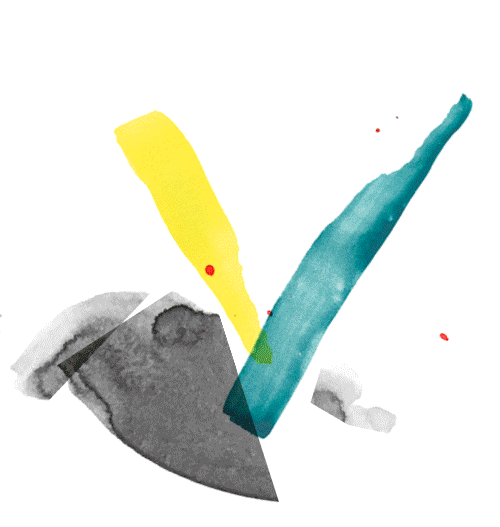

Sign up for our newsletters. You can change the settings or unsubscribe at any time.
Thank you for your subscription. We have sent you an e-mail with a confirmation link.


exp. 1
exp. 2
exp. 3

Mauricio Gatti
Venue: 11th Berlin Biennale c/o ExRotaprint
Was also part of: exp. 1
Mauricio Gatti
Born 1941 in Montevideo, UY – died 1991 in Montevideo
Mauricio Gatti was a young artist who was held prisoner in military barracks in Montevideo together with other Uruguayan anarchosyndicalists in 1971. From there, Gatti wrote and drew letters to his three-year-old daughter Paula, explaining their separation through a story about jungle animals who once lived and worked together but are now held against their will in a zoo.
Smuggled out of prison by Martha, his then wife and Paula’s mother, the letters were turned into a book. En la selva hay mucho por hacer [In the Jungle There Is Much to Do] was first published in Uruguay in 1971 by members of the anarchist commune Comunidad del Sur, where Gatti had previously worked as a ceramist and printmaker. Through its poem-like narrative, the story ultimately affirms that children are capable of understanding their own history, and that we all have agency when our freedom is threatened. In the jungle that Gatti describes, species live in abundance and collaborate for the greater good of society. These elements of Gatti’s work have been preserved and continually retold in shifting forms of collective resistance.
In the 1970s and 1980s, new editions and translations were made of the original book—largely by organizations supporting exiled communities of political refugees. In every case, the book was selfpublished by very small editorial houses or political organizations that recognized the importance of spreading the work as a necessary story, as a contemporary weapon of solidarity. Those who republished it, almost always without permission, did so in the spirit of understanding it as a story that cannot be owned but that must belong to everyone.
Amelia Bande
Queer Ancient Ways: A Decolonial Exploration
Zairong Xiang
Monograph
THE MOBILIZATION
Nicolás Cuello
Text
Memorial to the Sinti and Roma Victims of National Socialism
Dani Karavan
Memorial
„Klaus Eckschen: Hörspiel“
Die Remise
Hörspiel
Expresiones de la locura: el arte de los enfermos mentales
Hans Prinzhorn
Monograph
A Moment of True Decolonization / Episode #6: Sinthujan Varatharajah. Constructing the Tamil Eelam State
The Funambulist / Sinthujan Varatharajah
Podcast
By using this website you agree to the use of cookies in accordance with our data privacy policy.

Mauricio Gatti
Venue: 11th Berlin Biennale c/o ExRotaprint
Was also part of: exp. 1
Mauricio Gatti
Born 1941 in Montevideo, UY – died 1991 in Montevideo
Mauricio Gatti was a young artist who was held prisoner in military barracks in Montevideo together with other Uruguayan anarchosyndicalists in 1971. From there, Gatti wrote and drew letters to his three-year-old daughter Paula, explaining their separation through a story about jungle animals who once lived and worked together but are now held against their will in a zoo.
Smuggled out of prison by Martha, his then wife and Paula’s mother, the letters were turned into a book. En la selva hay mucho por hacer [In the Jungle There Is Much to Do] was first published in Uruguay in 1971 by members of the anarchist commune Comunidad del Sur, where Gatti had previously worked as a ceramist and printmaker. Through its poem-like narrative, the story ultimately affirms that children are capable of understanding their own history, and that we all have agency when our freedom is threatened. In the jungle that Gatti describes, species live in abundance and collaborate for the greater good of society. These elements of Gatti’s work have been preserved and continually retold in shifting forms of collective resistance.
In the 1970s and 1980s, new editions and translations were made of the original book—largely by organizations supporting exiled communities of political refugees. In every case, the book was selfpublished by very small editorial houses or political organizations that recognized the importance of spreading the work as a necessary story, as a contemporary weapon of solidarity. Those who republished it, almost always without permission, did so in the spirit of understanding it as a story that cannot be owned but that must belong to everyone.
Amelia Bande
Invitation to the Species: Cecilia Vicuña
Tamaas / Cecilia Vicuña
Podcast
Memorial to the Sinti and Roma Victims of National Socialism
Dani Karavan
Memorial
Struggle as Culture: The Museum of Solidarity, 1971–73
María Berríos
Essay
El primer nueva corónica y buen gobierno
Felipe Guamán Poma de Ayala
Chronicle
#fight4rojava
Graffiti
Touching Feeling. Affect, Pedagogy, Performativity
Eve Kosofsky Sedgwick
Monograph
By using this website you agree to the use of cookies in accordance with our data privacy policy.

Mauricio Gatti
Venue: 11th Berlin Biennale c/o ExRotaprint
Was also part of: exp. 1
Mauricio Gatti
Born 1941 in Montevideo, UY – died 1991 in Montevideo
Mauricio Gatti was a young artist who was held prisoner in military barracks in Montevideo together with other Uruguayan anarchosyndicalists in 1971. From there, Gatti wrote and drew letters to his three-year-old daughter Paula, explaining their separation through a story about jungle animals who once lived and worked together but are now held against their will in a zoo.
Smuggled out of prison by Martha, his then wife and Paula’s mother, the letters were turned into a book. En la selva hay mucho por hacer [In the Jungle There Is Much to Do] was first published in Uruguay in 1971 by members of the anarchist commune Comunidad del Sur, where Gatti had previously worked as a ceramist and printmaker. Through its poem-like narrative, the story ultimately affirms that children are capable of understanding their own history, and that we all have agency when our freedom is threatened. In the jungle that Gatti describes, species live in abundance and collaborate for the greater good of society. These elements of Gatti’s work have been preserved and continually retold in shifting forms of collective resistance.
In the 1970s and 1980s, new editions and translations were made of the original book—largely by organizations supporting exiled communities of political refugees. In every case, the book was selfpublished by very small editorial houses or political organizations that recognized the importance of spreading the work as a necessary story, as a contemporary weapon of solidarity. Those who republished it, almost always without permission, did so in the spirit of understanding it as a story that cannot be owned but that must belong to everyone.
Amelia Bande
Fragments of the Artist’s Diary, Berlin 11.2019–1.2020
Virginia de Medeiros
Diary
El primer nueva corónica y buen gobierno
Felipe Guamán Poma de Ayala
Chronicle
Grupo Experimental de Cine en acción
Gabriel Peluffo
Drawing
II: La Solidaridad va Más Allá de un Concepto. Entre las Curadoras de la XI Berlin Biennale
Lisette Lagnado, Agustín Pérez Rubio
Conversation
New Look
Flávio de Carvalho
Performance
III: La familia son quiénes se alegran con nuestros actos diarios. Detrás de las curadoras de la XI
María Berríos, Agustín Pérez Rubio
Conversation
By using this website you agree to the use of cookies in accordance with our data privacy policy.

Mauricio Gatti
Venue: 11th Berlin Biennale c/o ExRotaprint
Was also part of: exp. 1
Mauricio Gatti
Born 1941 in Montevideo, UY – died 1991 in Montevideo
Mauricio Gatti was a young artist who was held prisoner in military barracks in Montevideo together with other Uruguayan anarchosyndicalists in 1971. From there, Gatti wrote and drew letters to his three-year-old daughter Paula, explaining their separation through a story about jungle animals who once lived and worked together but are now held against their will in a zoo.
Smuggled out of prison by Martha, his then wife and Paula’s mother, the letters were turned into a book. En la selva hay mucho por hacer [In the Jungle There Is Much to Do] was first published in Uruguay in 1971 by members of the anarchist commune Comunidad del Sur, where Gatti had previously worked as a ceramist and printmaker. Through its poem-like narrative, the story ultimately affirms that children are capable of understanding their own history, and that we all have agency when our freedom is threatened. In the jungle that Gatti describes, species live in abundance and collaborate for the greater good of society. These elements of Gatti’s work have been preserved and continually retold in shifting forms of collective resistance.
In the 1970s and 1980s, new editions and translations were made of the original book—largely by organizations supporting exiled communities of political refugees. In every case, the book was selfpublished by very small editorial houses or political organizations that recognized the importance of spreading the work as a necessary story, as a contemporary weapon of solidarity. Those who republished it, almost always without permission, did so in the spirit of understanding it as a story that cannot be owned but that must belong to everyone.
Amelia Bande
Weaving Solidarity
Renata Cervetto and Duygu Örs
Q&A
I: Junto a las curadoras de la XI Berlin Biennale for Contemporary Art
Renata Cervetto, Lisette Lagnado
Conversation
Glossary of Common Knowledge
L’Internationale Online
Glossary
Touching Feeling. Affect, Pedagogy, Performativity
Eve Kosofsky Sedgwick
Monograph
Género y colonialidad en busca de claves de lectura y de un vocabulario estratégico descolonial
Rita Segato
Essay
O Bailado do Deus Morto
Flávio de Carvalho
Play
By using this website you agree to the use of cookies in accordance with our data privacy policy.
By using this website you agree to the use of cookies in accordance with our data privacy policy.




